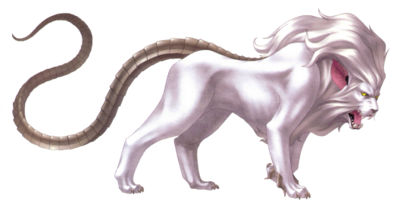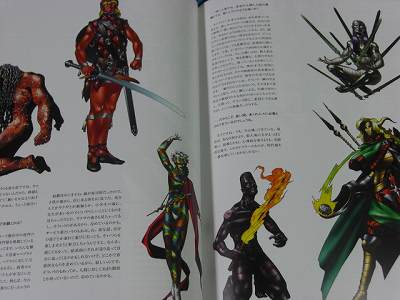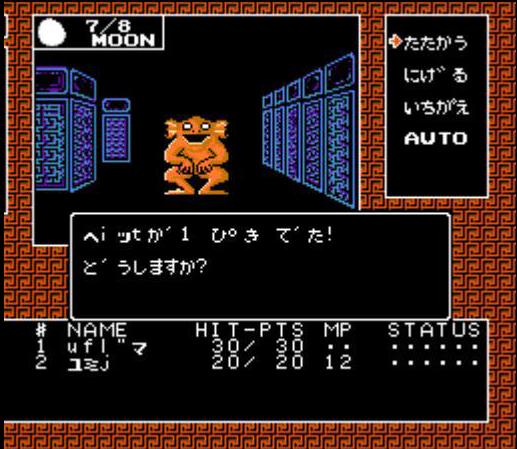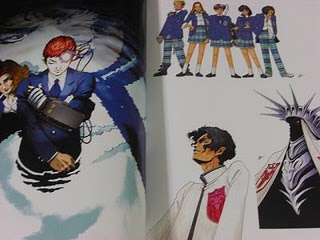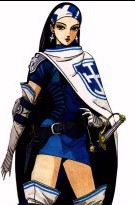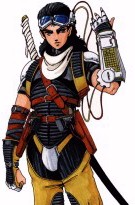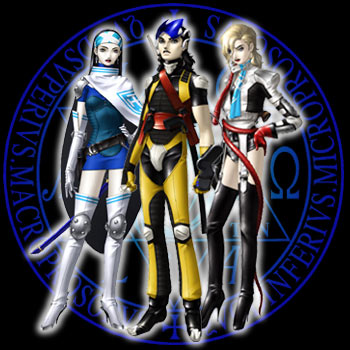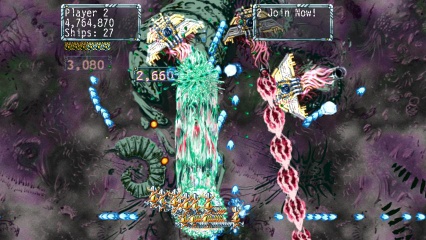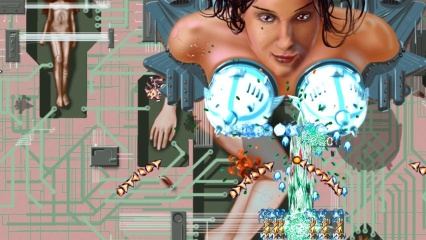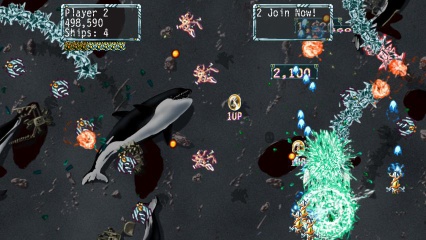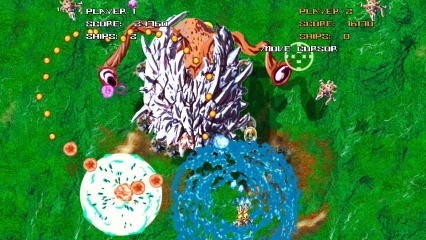 When clearing out an old laptop, I came across several game related images I thought I’d share (CLICK them to see the original full-sized versions), and I ask the question: what emulated games do you give to a non-gamer?
When clearing out an old laptop, I came across several game related images I thought I’d share (CLICK them to see the original full-sized versions), and I ask the question: what emulated games do you give to a non-gamer?.
.
We were sipping batidas in the guest lounge of the Zurich hotel, when my dad asked me for my old laptop. It was Windows XP and overheated when you ran anything more advanced than a SNES emulator, resulting in impromptu and frightening shutdowns, but it was better than a Vista laptop we agreed.
When deleting my old files from said laptop, in preparation for the hand-over, I came across several images – some I’d never made use of, others deserved more exposure.
 The most significant, for me, are scans of original artwork from the first two CDi Zelda games. When interviewing Dale DeSharone on the development of the games, he explained how he’d dug around in his attic to find his old CDi player and copies of the games (to play them again with his children), and also I believe this original concept art for the games. He sent me scans from all his old games, and proved extremely helpful when writing the feature.
The most significant, for me, are scans of original artwork from the first two CDi Zelda games. When interviewing Dale DeSharone on the development of the games, he explained how he’d dug around in his attic to find his old CDi player and copies of the games (to play them again with his children), and also I believe this original concept art for the games. He sent me scans from all his old games, and proved extremely helpful when writing the feature. So it was with much sadness that I discovered he’d passed away a few years ago. While these images have appeared in print, I don’t think they’ve ever been available in digital format before, and they’re so nice it would be a shame to have them languish on an old forgotten hard drive of mine.
So it was with much sadness that I discovered he’d passed away a few years ago. While these images have appeared in print, I don’t think they’ve ever been available in digital format before, and they’re so nice it would be a shame to have them languish on an old forgotten hard drive of mine. A lot of people unfairly criticise the Zelda CDi titles because of the cinematics, but I’ve played the hell out of them over the years and they’re still a blast to complete. The artwork, as shown, is also quite nice. As the only person to have interviewed him on his work, I feel it’s my duty to share these images.
A lot of people unfairly criticise the Zelda CDi titles because of the cinematics, but I’ve played the hell out of them over the years and they’re still a blast to complete. The artwork, as shown, is also quite nice. As the only person to have interviewed him on his work, I feel it’s my duty to share these images. Next from my archives are some rare photos regarding Sega and TecToy. The first must be over 20 years old now, the second from 1997, and both were scanned from old prints. They’re a record from a seldom documented aspect of gaming history.
Next from my archives are some rare photos regarding Sega and TecToy. The first must be over 20 years old now, the second from 1997, and both were scanned from old prints. They’re a record from a seldom documented aspect of gaming history. Stefano Arnhold (Tec Toy President) with Mr David Rosen (founder of Sega) and Mr Sakurai (Executive Director of Sega), making history by joining forces.
Stefano Arnhold (Tec Toy President) with Mr David Rosen (founder of Sega) and Mr Sakurai (Executive Director of Sega), making history by joining forces. Stefano Arnhold with Mr. Nakayama (Sega´s President), when Tec Toy gave him a large amethyst to celebrate ten years of working together (1987-1997).
Stefano Arnhold with Mr. Nakayama (Sega´s President), when Tec Toy gave him a large amethyst to celebrate ten years of working together (1987-1997). Not everything I found was of importance. Here are several shots from Final Fantasy Adventure on the monochrome Game Boy, for a Seiken Desnetsu/Secret of Mana feature I ended up never writing.
Not everything I found was of importance. Here are several shots from Final Fantasy Adventure on the monochrome Game Boy, for a Seiken Desnetsu/Secret of Mana feature I ended up never writing. I actually replayed and completed Secret of Mana recently, and I might have to change my view on it being the best of Square’s Chrono Trigger/Final Fantasy 6/Secret of Mana trio.
I actually replayed and completed Secret of Mana recently, and I might have to change my view on it being the best of Square’s Chrono Trigger/Final Fantasy 6/Secret of Mana trio. It was good fun, but there was a lot more dungeon crawling and fighting than I remember. It was almost like a Final Fight/Streets of Rage game, albeit with magic and levelling, and only a handful of villages.
It was good fun, but there was a lot more dungeon crawling and fighting than I remember. It was almost like a Final Fight/Streets of Rage game, albeit with magic and levelling, and only a handful of villages. I think finishing it over two days, as opposed to over most of a year when I was a kid, changed my perception of its pacing. Too much combat and not enough exploration.
I think finishing it over two days, as opposed to over most of a year when I was a kid, changed my perception of its pacing. Too much combat and not enough exploration. And the grinding, good lord there was a lot of grinding, especially for magic spells, which if you don’t level up renders some later bosses impossible. Great music though. Getting back to Final Fantasy Adventure, I recall it being excellent, though I don’t know how I’d fare if I played it again today. I also don’t feel like playing the remake.
And the grinding, good lord there was a lot of grinding, especially for magic spells, which if you don’t level up renders some later bosses impossible. Great music though. Getting back to Final Fantasy Adventure, I recall it being excellent, though I don’t know how I’d fare if I played it again today. I also don’t feel like playing the remake. What stood out in my mind, is that there’s a sub-quest where you need to get hold of some Medusa’s teeth in order to cure the brother of a woman called Amanda. In the end you slay medusa before you can get her teeth, and Amanda ends up getting bitten and turning into Medusa herself. The only solution, in order to save her brother and continue the game, is the kill her and take HER teeth. Her death at your hands saves her brother. I paused for a long time on this screen, reluctant to do the deed. The death of this NPC was profoundly moving, despite the small size of the screen – perhaps more so because of how intimate playing a GB game can be.
What stood out in my mind, is that there’s a sub-quest where you need to get hold of some Medusa’s teeth in order to cure the brother of a woman called Amanda. In the end you slay medusa before you can get her teeth, and Amanda ends up getting bitten and turning into Medusa herself. The only solution, in order to save her brother and continue the game, is the kill her and take HER teeth. Her death at your hands saves her brother. I paused for a long time on this screen, reluctant to do the deed. The death of this NPC was profoundly moving, despite the small size of the screen – perhaps more so because of how intimate playing a GB game can be. The rest of game took on a melancholy note after this, a tone reminiscent of its sequel Secret of Mana where, as Jeremy Parish pointed out, concludes with none of the characters in a happy situation.
The rest of game took on a melancholy note after this, a tone reminiscent of its sequel Secret of Mana where, as Jeremy Parish pointed out, concludes with none of the characters in a happy situation. The early Secret of Mana games are just depressing – which I’d say makes them worth playing more than a lot of the emotionally stunted RPGs out there.
The early Secret of Mana games are just depressing – which I’d say makes them worth playing more than a lot of the emotionally stunted RPGs out there.
 Other Game Boy imagery I found was this map of Gargoyle’s Quest I made for a freelance article. Alongside it were maps for other games. It’s pretty redundant actually, since these past two days I’ve been playing Gargoyle’s Quest on the original Game Boy, and in doing so I discovered the VGMaps website. I don’t think I’ve ever heard of it before, or if I have, I forgot soon after. But it’s pretty amazing – some people have put a lot of effort into making maps for hundreds of games. Going through my folders, I found maps for other games.
Other Game Boy imagery I found was this map of Gargoyle’s Quest I made for a freelance article. Alongside it were maps for other games. It’s pretty redundant actually, since these past two days I’ve been playing Gargoyle’s Quest on the original Game Boy, and in doing so I discovered the VGMaps website. I don’t think I’ve ever heard of it before, or if I have, I forgot soon after. But it’s pretty amazing – some people have put a lot of effort into making maps for hundreds of games. Going through my folders, I found maps for other games. Snake’s Revenge is one of my all-time favourite NES games. Not because it was an early title I played, which might give it a degree of nostalgia based faux-quality, but because I think it represents a high mark in NES game design. I first played it sometime around 2002, having heard plenty of scorn poured on it, but desiring something – anything – Metal Gear related to play. I’ve played a lot of NES games over the years, and frankly it blew me away. I’d rate it somewhere after MGS3, MG2SS (MSX), MGS and Ghost Babel in terms of my favourite Metal Gear games. This puts it above the first MG title (MSX and NES port), plus MGS2 and MGS4. Which isn’t to say it’s better than a PS3 game – just that I had more fun with it.
Snake’s Revenge is one of my all-time favourite NES games. Not because it was an early title I played, which might give it a degree of nostalgia based faux-quality, but because I think it represents a high mark in NES game design. I first played it sometime around 2002, having heard plenty of scorn poured on it, but desiring something – anything – Metal Gear related to play. I’ve played a lot of NES games over the years, and frankly it blew me away. I’d rate it somewhere after MGS3, MG2SS (MSX), MGS and Ghost Babel in terms of my favourite Metal Gear games. This puts it above the first MG title (MSX and NES port), plus MGS2 and MGS4. Which isn’t to say it’s better than a PS3 game – just that I had more fun with it. In the context of NES games, it’s fairly sophisticated. Entry into the enemy base requires reaching an area with guards while staying undetected, then radioing your comrade who will come into the open and get captured, causing the guards to unlock the door, thereby allowing you inside. Another game might have just had you blasting stuff to get inside (Mission Impossible is also sophisticated in places, but Snake’s Revenge is easier to control I find). It also features a lot of things found in later MG games: spotlights, directional microphone, interrogating superior officers, truth serum, orange camo, a shotgun, starting the game with a knife, enemies on flying vehicles, a ship full of Metal Gear units. Of the entire NES’ library, Snake’s Revenge is one of only a handful I can still tolerate playing on the original hardware, as opposed to with emulation and save states.
In the context of NES games, it’s fairly sophisticated. Entry into the enemy base requires reaching an area with guards while staying undetected, then radioing your comrade who will come into the open and get captured, causing the guards to unlock the door, thereby allowing you inside. Another game might have just had you blasting stuff to get inside (Mission Impossible is also sophisticated in places, but Snake’s Revenge is easier to control I find). It also features a lot of things found in later MG games: spotlights, directional microphone, interrogating superior officers, truth serum, orange camo, a shotgun, starting the game with a knife, enemies on flying vehicles, a ship full of Metal Gear units. Of the entire NES’ library, Snake’s Revenge is one of only a handful I can still tolerate playing on the original hardware, as opposed to with emulation and save states. Another map I found was for Jurassic Park, also done for a freelance article years ago. Though technically not really a map, since it doesn’t cover the whole level. I recall when the world was in Jurassic Park fever, and numerous games for it came out. I always liked the first Genesis game more, despite its technical shortcomings. I can still play it today and find praise for it. There are no lethal weapons for the dinosaurs, you can only temporarily stun them, meaning a raptor may later awaken and hunt you down. The AI is pretty good in places, especially the raptors in the visitor centre. Oh, and you can actually play as the raptor! The Rampage Edition sequel screwed up the digitised graphics to make them cartoony, and suddenly you had lethal weapons. The level design was also long and fairly awful, compared to the original was short enough not to outstay its welcome.
Another map I found was for Jurassic Park, also done for a freelance article years ago. Though technically not really a map, since it doesn’t cover the whole level. I recall when the world was in Jurassic Park fever, and numerous games for it came out. I always liked the first Genesis game more, despite its technical shortcomings. I can still play it today and find praise for it. There are no lethal weapons for the dinosaurs, you can only temporarily stun them, meaning a raptor may later awaken and hunt you down. The AI is pretty good in places, especially the raptors in the visitor centre. Oh, and you can actually play as the raptor! The Rampage Edition sequel screwed up the digitised graphics to make them cartoony, and suddenly you had lethal weapons. The level design was also long and fairly awful, compared to the original was short enough not to outstay its welcome. In my PC98 folder on the laptop I found old images of Tato from Popful Mail, and it reminded me that they’d drawn each standing frame for him independently. One thing which annoys me is lazy pixel artists who mirror the left and right images to make ambidextrous characters who switch weapon hands when you turn around. Note how Tato keeps his staff in his right hand at all times. Curiously, the PC-Engine port of the PC98 game lost this and instead mirrored all the sprites, while the Sega remake for the Sega CD redrew all the characters in an ambidextrous fashion. Reflecting on the higher quality of the PC98 version, I noted with irony that Tato is actually the Polish word for “dad” – and in my mental wanderings through my archive of images I’d totally forgotten to update the laptop.
In my PC98 folder on the laptop I found old images of Tato from Popful Mail, and it reminded me that they’d drawn each standing frame for him independently. One thing which annoys me is lazy pixel artists who mirror the left and right images to make ambidextrous characters who switch weapon hands when you turn around. Note how Tato keeps his staff in his right hand at all times. Curiously, the PC-Engine port of the PC98 game lost this and instead mirrored all the sprites, while the Sega remake for the Sega CD redrew all the characters in an ambidextrous fashion. Reflecting on the higher quality of the PC98 version, I noted with irony that Tato is actually the Polish word for “dad” – and in my mental wanderings through my archive of images I’d totally forgotten to update the laptop. He wanted all my junk removed, but didn’t ask for anything extra besides the usual staples, things like Windows Media Player and a PDF reader. Want any games, I asked? No, just Pinball and Othello for the NES, he replied. These were two titles I got with my system two decades ago, and it’s all he’s had any interest in playing. And suddenly, I was hit with a quandary I’d read about before: what do you get a non-gamer to play when introducing them to games? I’d read a similar thing on the old Insert Credit forums, a poster who worked in a game store encountered a middle-aged woman who showed a recent interest in gaming and wanted to know what was worth playing. He admitted that his mind froze at that moment and, despite discussing numerous non-mainstream and quality games on the IC forums, despite having the background to champion the medium, couldn’t think of what to recommend. Indie games? A SNES emulator and some classic? A current system?
He wanted all my junk removed, but didn’t ask for anything extra besides the usual staples, things like Windows Media Player and a PDF reader. Want any games, I asked? No, just Pinball and Othello for the NES, he replied. These were two titles I got with my system two decades ago, and it’s all he’s had any interest in playing. And suddenly, I was hit with a quandary I’d read about before: what do you get a non-gamer to play when introducing them to games? I’d read a similar thing on the old Insert Credit forums, a poster who worked in a game store encountered a middle-aged woman who showed a recent interest in gaming and wanted to know what was worth playing. He admitted that his mind froze at that moment and, despite discussing numerous non-mainstream and quality games on the IC forums, despite having the background to champion the medium, couldn’t think of what to recommend. Indie games? A SNES emulator and some classic? A current system? It’s a worthy question, since you want something easily accessible and also free of a lot of the technical bullshit found in a lot of games – but at the same time, you want something gamey, because I personally wouldn’t want a non-gamer to have their entire collective knowledge revolve around something as derivative like Heavy Rain. Pole’s Big Adventure is good, because it covers a lot of known gaming tropes in an easy and fun manner (which is different to Heavy Rain’s ripping off of other games and calling it the Emperor’s New Clothes). But maybe PBA doesn’t have enough story... Non-gamers always seem to want to compare games to things like books and films, though I feel racquetball mixed with music and paintings would be a better introductory description. Stories then... A Square SNES RPG? The trio I mentioned previously have a little too much repetitive battling for a newcomer to the medium. I want to say Valkyria Chronicles, because it has a good story and is similar enough to chess to make comparisons, but now I’ve moved WAY beyond the means of my laptop. My dad likes Pinball and Othello because they’re based on pre-existing things he’s familiar with, and neither has a story. Maybe I’ll give him Snake’s Revenge and see how he gets on.
It’s a worthy question, since you want something easily accessible and also free of a lot of the technical bullshit found in a lot of games – but at the same time, you want something gamey, because I personally wouldn’t want a non-gamer to have their entire collective knowledge revolve around something as derivative like Heavy Rain. Pole’s Big Adventure is good, because it covers a lot of known gaming tropes in an easy and fun manner (which is different to Heavy Rain’s ripping off of other games and calling it the Emperor’s New Clothes). But maybe PBA doesn’t have enough story... Non-gamers always seem to want to compare games to things like books and films, though I feel racquetball mixed with music and paintings would be a better introductory description. Stories then... A Square SNES RPG? The trio I mentioned previously have a little too much repetitive battling for a newcomer to the medium. I want to say Valkyria Chronicles, because it has a good story and is similar enough to chess to make comparisons, but now I’ve moved WAY beyond the means of my laptop. My dad likes Pinball and Othello because they’re based on pre-existing things he’s familiar with, and neither has a story. Maybe I’ll give him Snake’s Revenge and see how he gets on. And the last image I dug out of this dying laptop? A logo I’d made for Greg Costikyan’s Manifesto Games. He had expressly said no communist imagery, so that's precisely what I went and made.
And the last image I dug out of this dying laptop? A logo I’d made for Greg Costikyan’s Manifesto Games. He had expressly said no communist imagery, so that's precisely what I went and made.I didn't win the competition, I think the winner did a logo about Tiananmen Square.














